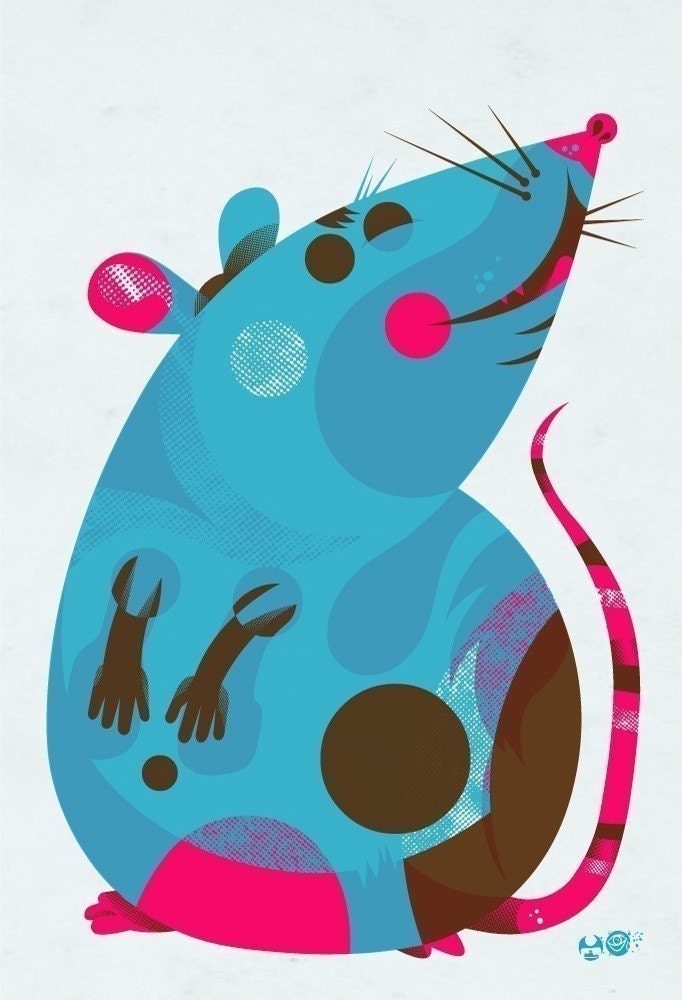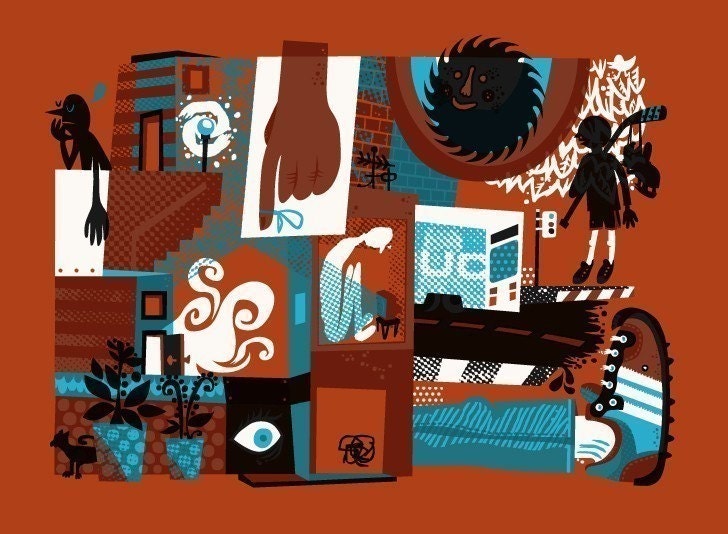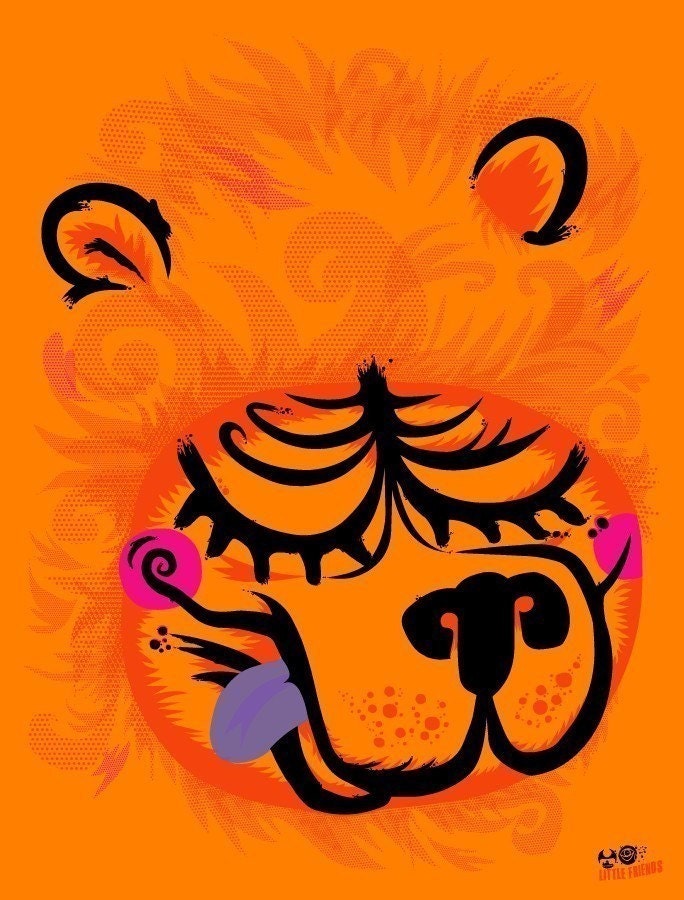Little Friends of Printmaking: The Q&A
Posted Under: Artists,Buying In (the book),DIYism,Q&A,The Designed Life
Noise Pop Festival 2008, originally uploaded by Little Friends of Printmaking.
Here, then, the third Q&A connected to artists I commissioned to create posters related to Buying In. This time it’s The Little Friends of Printmaking, who I believe I first heard of from Faythe Levine; then I checked out their site, and saw their work in person when I happened to be at Renegade Chicago a year or so ago. I was thrilled when they zithromax were willing to make a poster in connection with the Washington D.C. Buying In event (see below; there’s also a version of this poster that’s sort of like a “tour blank,” but more on that some other time).
As with F2 Design and Amy Jo, the other esteemed creators I was fortunate to enlist in my largely ego-driven cause, I asked The Little Friends of Printmaking if they’d be willing to do a Q&A here, and they said yes. Read on for their thoughts on working as a team; on getting applications from hopeful Brand Managers; on the inspiring effects of crippling student debt and no particular professional prospects; on the effect of so many poster-makers; on how their life is actually not that much like a sitcom; and on which of their cats is less helpful, among other topics.
Very briefly: The Little Friends of Printmaking are Melissa and JW Buchanan; they are based in Milwaukee; they make posters and art prints and illustration work and apparently even at least one toy. (Blog; Flickr stream.) And as you’ll see, they’re very funny.
Q: So you are a married couple who work together as Little Friends of Printmaking. At what point did you decide to take a team approach? And do you think it made it harder or easier to establish yourselves as Little Friends of Printmaking than as two separate artists? Do people ever think that you’re more of a company than two collaborating artists?
Melissa: We started working together when we were in school. We were both studying art at the University of Wisconsin in Madison, and we had met early on. I don’t know when exactly we started to work as a team, or if there was a specific project that made us want to pool our resources; I think it was a gradual extension of us working side by side. When you’re a printmaker the work goes much faster if you’re working with a buddy. That kind of relationship, where you help someone else print their work, that wasn’t unusual. What we did, collaborating from beginning to end, was unusual. Our professors didn’t really encourage us or even approve of our partnership, probably because it was harder to grade us as individuals. We made their lives 0.15% more complicated, which of course was unacceptable.
JW: It’s a big step to throw everything together into a partnership the way we did. Maybe we didn’t have the sense of propriety that other people had for their own work, or maybe we just liked each other’s work a whole lot. Who knows. As a team, we have had an easier time establishing ourselves in some respects. When you work under a name that isn’t your given name, or from under the umbrella of a collective, you kind of get to invent and define who you are as an artist without sounding too much like an idiot or an asshole.
It’s been much easier for us to promote our Little Friends projects because our names aren’t front and center. I don’t think we would have made it very far if we had to rely on reserves of self-confidence that we don’t have. We can hide behind the name, use it as a bully pulpit, whatever. It works for us. There’s still a lot of glamour attached to the idea of the artist as a genius with a singular vision—we don’t get any of that. We’re glamour-deficient.
M: People do think we’re a big company. We get résumés every week. People write to us, wanting to be our Creative Director or a Brand Manager. Somehow they missed that it’s just the two of us. Maybe the high-rise building with the sign that says “Little Friends Centre, 1 Little Friends Way” gives the wrong impression.
Batman movie poster, originally uploaded by Little Friends of Printmaking.
I’m also assuming, based on how busy you seem with the posters, art shows, illustration work, toy and other projects, that you’re both making a living off Little Friends of Printmaking at this point. How long did it take you to get https://www.skincamouflageuk.uk/order-valtrex-1000mg/ to that point? Was it hard to learn the “business side” of running a creative business?
JW: It took us longer than it might have to become independent because of our crippling student debt. We also have a shocking lack of perspective because we started with nothing — we did Little Friends because we had no other serious prospects. After school, we both worked as designers while doing Little Friends at night for about 2 years.
M: At that point, it became obvious that at least one of us should be running the business full-time. Then we just sort of eased out of employment and into bumhood. We live in a hobocamp. It’s not so bad; it has wi-fi.
JW: When we started Little Friends in school, we got a big charge out of pretending to be a business and designing all of the trappings and visual stuff that go along with that. Pretending to be a business segued pretty easily into the reality of actually being a business. There were things we had to learn, but hey, we already had business cards and a logo and stuff.
I think, despite the variety of projects, the posters are still the main thing. Has the apparent explosion of poster makers selling and marketing themselves online been a) good, because it broadens the audience, or b) a challenge, because of all the competition?
JW: I think that the influx of new concert poster artists has been mostly a bad thing. It’s created a culture where poster artists are now expected to work for free. That’s not a system that can keep itself going. It’s the mortgage lending industry of graphic design. A lot of quality work is being done, but I can’t feel good about it because I’m not sure if those people are making a living.
M: For as much as we’re known for being poster artists, posters make up a small part of our overall workload. We split our time more or less equally between the work we do for ad agencies, editorial illustration, and our BAD VIBES art print series. We started the BAD VIBES series back in 2006. At that time every poster artist, including us, was making art prints in addition to their posters. What that amounted to was a print that was small, cost more than a poster, and didn’t look like the rest of the artist’s work. We decided to make poster-sized art prints that looked like our stuff and cost the same, because why not? The numbers worked. People responded to it, and it became a mainstay of what we do. We’re now at a comfortable point where the art prints sell better than the concert posters. People don’t have to love the band to want the artwork.
Do you work out of your home, or in a separate studio space? Also: Any pets? What I’m curious about here is how you deal with the work/ life issues that might accompany being both a creative and marital team. But I’m too polite to ask directly.
 JW: We work in a home studio. It’s pretty ideal for us because we don’t like to go anywhere or see anybody. Because we work together, it doesn’t really lend itself to marriage/work conflicts. If the house is full of silkscreen stuff, Melissa knows. It’s not like a sitcom where one of us is trying to run a design business at home and the other is trying to bring the boss home for a steak dinner.
JW: We work in a home studio. It’s pretty ideal for us because we don’t like to go anywhere or see anybody. Because we work together, it doesn’t really lend itself to marriage/work conflicts. If the house is full of silkscreen stuff, Melissa knows. It’s not like a sitcom where one of us is trying to run a design business at home and the other is trying to bring the boss home for a steak dinner.
M: Quick, hide the swatch books! Throw a blanket over the ink cart! What’s that delicious smell? The paper’s in the oven! Oh noes! We’ll be right back.
JW: I think we get along better the more we see each other. It’s nice to have somebody on your side. And I don’t have to explain myself to someone who doesn’t believe in what I’m doing. It makes it easier to do the hard, hard work.
M: We have 2 round cats. They’re our studio pals. George, who sits in the window and watches us work, had been named Intern #1. Ralph, who is generally unhelpful, had been demoted to Intern #4. (There is no Intern #2 or #3.)
What do you like about Milwaukee? Is it a good place to do what you do?
JW: We’re still looking for the perfect place to do what we do. To a certain extent, it doesn’t really matter where we live. We can do our work from anywhere, which maybe makes it too easy for us to stay put in Milwaukee when we should probably move on.
M: Every time we go out and do an exhibition in another city we sort of try it on for size. We’d gladly accept suggestions.
Murketing thanks The Little Friends of Printmaking. Visit them at their site (here); their online store (here); their blog (here); their Flickr stream (here); or their Etsy shop (here).




 "
"


















 Kim Fellner's book
Kim Fellner's book  A
A
Reader Comments
loved the cover they did for re:up magazine!